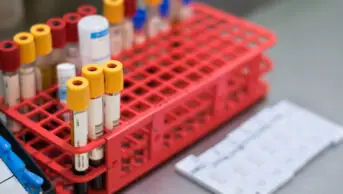The month of September heralds the last of summer and all that autumn brings. A particular memory from my own summer this year is the three hours I spent one Saturday watching ‘Oppenheimer‘; a Hollywood dramatisation of the life of the physicist J Robert Oppenheimer, whose work was fundamental to the development of the atomic bomb, a type of nuclear weapon. I was particularly interested in the film’s portrayal of the scientific paper that Oppenheimer and his PhD student Hartland Snyder published on 1 September 1939, the day that Hitler invaded Poland. The first day of September, incidentally, is also the date usually associated with the start of meteorological autumn. The depiction in the movie was that of the thrill on becoming the first to publish a theory on how black holes could form, using modern physics. It brought back memories from my own PhD, where the laboratory buzzed with enthusiasm and much debate on how new discoveries could be ‘claimed’ first and claimed quickly.
As I sit at my desk the day before this year’s autumn equinox, I wonder where we stand in terms of pharmacy research, it’s ‘cutting-edgeness’ and whether and where publishing first and publishing fast is encouraged or indeed required in our field. One way in which scientific findings can be disseminated quickly has traditionally been through ‘short communications’ as an article type. If we look elsewhere, for example the Journal of Nuclear Materials positively encourages authors to use its short communications route to share novel, high-impact and cutting-edge science, promising prioritisation and rapid publication via this mode.
However, my own experience as a journal reviewer in pharmacy has been somewhat different, where short communications are a home for smaller pieces of research, or simply a route to publish a pared down version of a fuller paper turned down at review. This is no doubt an unfair depiction of short communications per se and for those interested in a fuller analysis, an article entitled ‘The lost art of short communications in academia’ provides further insights.
The two short communications I have selected to review this month are both interesting and informative and, as I read them, I wonder where they sit on my imaged short communication continuum. The papers both link to the Royal Pharmaceutical Society’s mission to “to put pharmacy at the forefront of healthcare”, aligning with key policy documents as described below.
The first paper is a short communication article published in the International Journal of Pharmacy Practice (IJPP) assessing antimicrobial stewardship (AMS) through objective structured clinical examinations (OSCEs) in pharmacy education.
As we head towards World Antimicrobial Awareness Week in November, one topic of huge importance to pharmacists remains the challenge of antimicrobial resistance (AMR) and with it, the effort to measure and improve how antimicrobials are prescribed and used, known as AMS. So, what other way can we make sure that the next generation of pharmacists is fully versed in AMS than to teach and assess these skills in undergraduate curricula? The authors of this paper set out to describe their own implementation and assessment of whether OSCEs are a viable tool for assessing AMS principles at two campuses in Malaysia and Australia.
While published as a short communication article with a limited word allowance, the authors’ use of tables in fact disseminates much useful information, including detail of the OSCE station designs and description of the 39 cases, the corresponding World Health Organization AMS principles being tested, and the student performance on these. Based on their findings, the authors conclude AMS-based OSCEs to be a viable assessment tool in pharmacy education.

The second paper was also a short communication published in IJPP. The article title is an assertive statement that “recycling unused medications in hospitals is financially viable and good for the environment”. The RPS has been campaigning on the topic of environmental sustainability. This paper particularly grabbed my attention since, I am not afraid to admit, I have had a long-term academic interest in exploring the possibilities and practicalities of medication recycling myself, under the term ‘medicines reuse’.
What I didn’t manage to see in this short communication is any direct evidence that medication recycling is good for the environment, nor indeed any detailed description of definitions and practices in the field. Instead, the paper provides a brief account of a survey with 21 hospitals in the Lower Mainland of British Columbia, Canada, followed by a smaller observational study collecting information about the type and cost of medicines returned to stock for dispending, and the labour costs involved. If the authors’ extrapolation is to be accepted, they estimate a saving of CAD$415,000 if all the 21 sites ‘recycled’ oral medications back into their system.
Of course, in the UK and many developed countries, medicines reuse (also termed ‘recycling’, ‘re-dispending’ and so on) might take place within the controlled environment of a hospital building, but it is not currently allowed within any community setting. In fact, it could be argued that the subject of medicines reuse itself, as well as being complex, is somewhat contentious, meaning research in this area is sparce and debate normally stale. What this short communication offers is a small piece of a jigsaw, whose other parts and final shape are yet to be determined.
Are the findings of these two papers unique and worthy of publication as ‘short communication’, in the traditional sense associated with this article format? Perhaps the answer depends on one’s view of the urgency of the problem of AMR, and indeed of medicines costs, availability and their inevitable impact on the environment.
Perhaps in some areas of pharmacy, it is better to publish small than let the ideas perish and pass.


